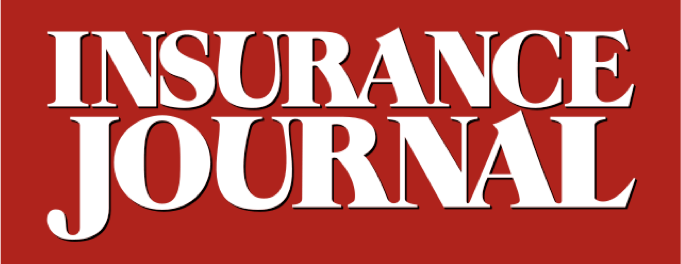Reactions to a recent Wall Street Journal article, which faulted the Demotech rating agency for giving top marks to a number of insurance carriers before the insurers went insolvent in recent years, has been mixed and muted.
After outrage from carriers, regulators and agents in 2022, when Demotech surprised the industry with unofficial warnings that some 16 Florida insurers were in financial trouble, concerns about the rating agency seemed to be old news.
“I don’t have any comment on the WSJ article. There isn’t anything new on that topic,” said Kyle Ulrich, president and CEO of the Florida Association of Insurance Agents, a group that had posted an angry letter about Demotech and its methodology in 2022.
Ulrich told the Wall Street Journal this week that some of Demotech’s ratings downgrades have come late in the game — often less than a year before an insurer’s collapse. That has “absolutely made a lot of people in Florida’s insurance market question ‘what does this [rating] really mean?'” Ulrich said.
Many Florida insurance agents have long regarded Demotech’s rating system as “a joke,” said John Gardner, a longtime agent in Fort Myers, Florida.
“They really have only one rating. ‘A’ is the lowest rating, so you have no good idea,” said Gardner.
Demotech’s official information shows it offers multiple rating levels. But in practice, most insurers are rated at the “A” level – until it’s too late and they face rehabilitation or liquidation, Gardner said.
The WSJ article showed that for 17 carriers, mostly in Florida and Louisiana, Demotech maintained ‘A’ ratings for most of the insurers until just a few weeks before insolvency, when the rating was withdrawn altogether. Only in two cases did the companies see a ratings downgrade, shortly before the rating was withdrawn. That jeopardizes policyholders hoping to find a reliable carrier in an increasingly storm-prone world.
Agents have more than a passing interest in ratings. They could face some liability exposure from insureds by recommending a carrier that later collapses. Most Florida insurance agents who obtain errors and omission policies through Big I, the national organization for independent agents, are covered if the carrier is rated favorably by a rating firm, Gardner said. But other insurers who offer E&O coverage may not offer that protection, he noted.
Granting favorable ratings for teetering insurance companies “is embarrassing” for Demotech, but is not surprising, given the once-shaky state of the Florida market, said Gina Clausen Lozier, a former insurance defense attorney in Florida who now represents policyholders.
The WSJ article echoes some of the issues raised by a 2024 study by researchers at Harvard and Columbia universities. They found that Demotech’s examinations of insurers is not as rigorous as other rating firms.
Demotech President Joe Petrelli this week responded to the WSJ article. He did not directly dispute the article’s conclusions, but argued that the authors had ignored the unexpected impact that excessive claims litigation had on a number of insurers that were later liquidated. The litigation expense increased dramatically after Demotech reviewers had examined carriers’ numbers from previous years, Petrelli said.
“The failed companies had consistent market share of about 3%, yet over the three years prior to insolvency saw their market share of new, annual litigated claims rise to nearly 20%,” Petrelli told Insurance Journal. “All this without an actuary or auditor noticing.”
Industry veterans have disputed that and have said that many were, in fact, taking notice. Florida’s property insurance market was showing signs of being overwhelmed with claims litigation as early as 2016. The industry had clamored for and received some legislative relief beginning in 2019. A wave of receiverships began early in 2021 and lasted through mid-2023.
Others noted that smaller, regional carriers have limited options on ratings, so may feel they must stick with Demotech. The largest U.S. rating firm, AM Best, generally charges higher fees and tends to rate larger, established companies. An AM Best spokesman declined to comment on the firm’s fees, but a compensation disclosure on the firm’s website from two decades ago shows the fees were as much as $1.5 million at that time.
In the year after the 2022 Florida controversy over Demotech, just three of Florida’s top 50 insurers withdrew from Demotech and switched to KBRA, the Kroll Bond Rating Agency. Three others stuck with Demotech but obtained additional ratings from KBRA. A 2022 plan by the Florida Department of Financial Services to explore alternative rating options, including a state-sponsored review organization, did not lead to any changes.
Petrelli has argued many times that Demotech has been a lifeline for smaller insurers that probably could not obtain financial ratings from anyone else. “We created this space,” he told the Wall Street Journal. “No one else was interested in doing that at the time.”
Still, a look at some of the trouble companies once rated favorably by Demotech raises questions. Despite Demotech’s strong ratings of several Florida carriers, for example, Everest Re Group in 2023 dropped some of those insurers from its portfolio, noting that they did not meet underwriting standards. And in Arkansas, United Home Insurance Co. was rated highly by Demotech – just days before it was placed in receivership in 2023.
For Florida-based Southern Fidelity Insurance, Demotech withdrew the carrier’s financial stability rating in mid-2022, after the carrier suspended new business. Just two weeks later, the carrier was insolvent. For several years before that, though, Demotech had given Southern Fidelity favorable ratings. Financial reports from Florida OIR and the National Association of Insurance Commissioners show trouble had been brewing for quite a while. Southern Fidelity failed to file required monthly statements with regulators in 2020. The company’s net losses worsened each year, from about $5.2 million in losses in 2017 to $122 million in losses in 2021.
Meanwhile, Southern Fidelity’s surplus had dwindled, from $136 million in 2017 to $42 million in 2021.
Was this article valuable?
Here are more articles you may enjoy.



 Twice Injured Firefighter Loses Second Workers’ Compensation Claim
Twice Injured Firefighter Loses Second Workers’ Compensation Claim  NTSB Unclear Who Was at Controls in Jet Crash That Killed Biffle and 6 Others
NTSB Unclear Who Was at Controls in Jet Crash That Killed Biffle and 6 Others  Former CEO of Nonprofit P/C Statistical Agent Sentenced for Stealing Millions
Former CEO of Nonprofit P/C Statistical Agent Sentenced for Stealing Millions  Louvre Tightens Security After $102M Jewel Heist, Installs Bars on Infamous Window
Louvre Tightens Security After $102M Jewel Heist, Installs Bars on Infamous Window 


